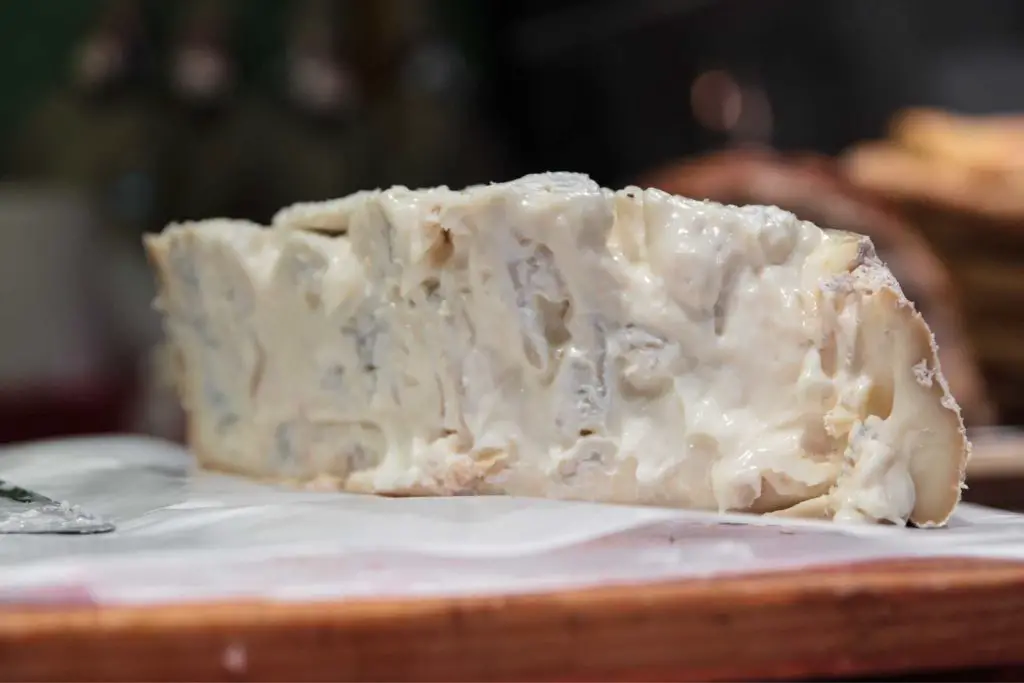Italy, with its rich winemaking traditions, is renowned globally for producing some of the finest wines in the world. Each region of the Italian peninsula boasts a unique wine heritage that reflects its culture, climate, and terrain. Among these wines, one stands out for its youthful exuberance and celebratory nature— Vino Novello. This “new wine,” with its vibrant color and fresh aromas, is Italy’s way of marking the end of the grape harvest and the arrival of autumn. But unlike wines that are designed to age gracefully over time, Vino Novello is made to be enjoyed young, offering a fleeting but delightful taste of the recent harvest.
For an American audience unfamiliar with this Italian tradition, Vino Novello is a captivating glimpse into Italy’s winemaking culture. It’s more than just a beverage—it’s a moment of celebration, a testament to Italy’s agricultural traditions, and a symbol of living in the present moment. This article takes you through the story of Vino Novello, from its ancient origins to the modern-day festivals that celebrate its release. We’ll explore its unique production process, regional variations, ideal food pairings, and the cultural significance that makes it so beloved across the country.

The historical origins: from ancient Rome to modern Italy
The concept of producing a young wine immediately after the harvest is not a new one. In fact, the practice of making early-harvest wines dates back to ancient Roman times. Romans celebrated the grape harvest with a light, quick-to-produce wine that could be enjoyed right away. This tradition continued through the centuries, evolving into the modern-day Vino Novello. Vino Novello as we know it today, however, was born in the 20th century. In the 1970s, inspired by the French Beaujolais Nouveau, Italian winemakers decided to create their own version of this young wine. But unlike Beaujolais Nouveau, which relies heavily on marketing and the cultural phenomenon surrounding its release, Vino Novello focuses on regional diversity, the quality of the grapes, and Italy’s unique winemaking processes. Though Vino Novello shares some similarities with Beaujolais Nouveau—both are light, fresh, and designed to be consumed shortly after harvest—it quickly distinguished itself with its own identity. Italian winemakers adopted techniques that suited their local grapes, giving Vino Novello a character distinctly its own. Over time, it became a staple of the Italian wine calendar, with its release eagerly anticipated by wine lovers across the country every autumn.

What is the difference between Vino Novello and new wine?
In contrast to new wine, Novello wine is crafted using a specific technique called carbonic maceration. This process requires keeping entire grape bunches intact (without pressing them) in a container filled with carbon dioxide, maintained at a temperature of around 30°C.
The carbonic maceration process: what makes Vino Novello unique?
One of the defining characteristics of Vino Novello is its production process, known as carbonic maceration. This method sets Vino Novello apart from other red wines, giving it a bright, fruity profile and a soft, velvety mouthfeel. But what exactly is carbonic maceration? Unlike traditional winemaking, which involves crushing grapes to release their juice for fermentation, carbonic maceration leaves the grapes whole. The process begins by placing whole, unpressed grape clusters into a sealed steel tank filled with carbon dioxide. The carbon dioxide creates an oxygen-free environment, which triggers a unique fermentation process. Instead of yeast breaking down the sugars in the juice, the fermentation happens inside each grape, with the sugars being transformed into alcohol within the intact grape skins.
This internal fermentation gives Vino Novello its characteristic fruitiness and lightness. The lack of pressing means that fewer tannins—compounds found in grape skins, seeds, and stems—end up in the final product. As a result, Vino Novello is smoother and more approachable than many traditional red wines. In Italy, winemakers are required by law to use at least 30% of the carbonic maceration process in producing Vino Novello, although many use a higher percentage. The remaining portion of the wine is typically made using traditional fermentation methods, which add complexity and depth to the final blend. The result is a wine that is light, fresh, and incredibly drinkable, perfect for enjoying during the cooler autumn months.
Italy’s grape varieties: a mosaic of flavours
One of the joys of Vino Novello is the wide range of grapes used to produce it. Italy is home to an incredible diversity of grape varieties, each with its own unique flavor profile. While Vino Novello is typically made from red grapes, the specific types of grapes used can vary greatly depending on the region. Some of the most commonly used grape varieties for Vino Novello include Aglianico, Cannonau, Barbera, Merlot, Nero d’Avola, Corvina, Refosco, and Sangiovese. Each grape variety brings something different to the wine, resulting in subtle differences in flavor and aroma depending on the region where the wine is made. For example, in the northern regions of Veneto and Piedmont, Barbera and Merlot are often used to produce Vino Novello. These grapes produce wines that are light and fruity, with notes of cherry and raspberry. In the warmer southern regions, such as Sicily and Campania, winemakers often use Nero d’Avola and Aglianico, which result in a deeper color and more intense flavors, with hints of plum and blackberry. This regional diversity makes Vino Novello a fascinating wine to explore. Each bottle offers a taste of the land it came from, reflecting the unique terroir, climate, and winemaking traditions of its region. For those who enjoy discovering new wines, Vino Novello offers a journey through Italy’s diverse landscape of grape varieties and flavors.
The timing of the release: a wine for the present
One of the most exciting aspects of Vino Novello is the anticipation surrounding its release. In Italy, Vino Novello can only be sold after midnight on November 6th of the harvest year. This strict regulation creates a sense of excitement, as wine lovers eagerly await the first taste of the year’s new wine. The release of Vino Novello is more than just a commercial event—it’s a cultural celebration that marks the end of the grape harvest and the arrival of autumn. The timing of the release is also significant because Vino Novello is meant to be enjoyed young. Unlike wines that improve with age, Vino Novello is at its best within the first few months after it’s made. Its fresh, fruity flavors are most vibrant shortly after production, and it’s generally recommended to consume Vino Novello by the following spring. Because of its short shelf life, winemakers are required to bottle Vino Novello by December 31st of the harvest year. Most Vino Novello is at its peak within six to twelve months of bottling, although some blends can last until August. After that, the wine begins to lose its characteristic freshness, and its fruit-forward flavors start to fade. This makes Vino Novello a wine for the present—a reminder to savor the moment and enjoy the fruits of the harvest while they’re still fresh. In a world where so much emphasis is placed on aging and preservation, Vino Novello offers a refreshing contrast, celebrating the beauty of youth and the fleeting nature of the harvest season.
The ideal pairings: a celebration of autumn flavours
One of the most delightful aspects of Vino Novello is how well it pairs with the foods of the autumn season. Its light, fruity character makes it a versatile companion for a wide range of dishes, from roasted chestnuts to hearty soups and stews. In Italy, Vino Novello is often enjoyed with roasted chestnuts, which are a popular street food during the fall months. The wine’s fresh, fruity flavors complement the nutty, slightly smoky taste of the chestnuts, creating a combination that evokes the rustic charm of autumn. Vino Novello also pairs beautifully with a variety of traditional Italian dishes. Hearty legume soups, such as lentil or chickpea soup, are a perfect match for the wine’s freshness, as are pumpkin-based dishes like pumpkin risotto or roasted pumpkin. The wine’s acidity helps to balance the richness of these dishes, creating a harmonious pairing that highlights the flavors of the season.

For cheese lovers, Vino Novello is a fantastic choice. Its light, velvety texture makes it an excellent match for aged cheeses like pecorino or gorgonzola, which have strong, pungent flavors that can be tempered by the wine’s fruitiness. Even desserts can benefit from a pairing with Vino Novello. Dark chocolate desserts, in particular, are a great match for the wine’s slight sweetness, creating a balanced combination that enhances the richness of the chocolate.

Festivals and traditions: the cultural significance of Vino Novello
In Italy, the release of Vino Novello is more than just a commercial event—it’s a cultural celebration that brings communities together to toast the harvest and enjoy the fruits of the land. Across the country, towns and villages host festivals and events to mark the arrival of Vino Novello, often coinciding with the feast of San Martino on November 11th. San Martino is a significant day in the Italian wine calendar, as it marks the moment when the year’s must (the fresh, unfermented grape juice) has fully transformed into wine. The Italian proverb “A San Martino ogni mosto diventa vino” (On Saint Martin’s Day, every must becomes wine) reflects the importance of this day in the winemaking tradition. During these festivals, wineries open their doors to the public, offering tastings of Vino Novello alongside local delicacies. Visitors can enjoy roasted chestnuts, mushroom dishes, and other seasonal foods while sipping on the fresh, fruity wine. These celebrations are a wonderful way to experience the warmth and hospitality of Italian culture, as well as the deep connection between the people and the land. For those lucky enough to be in Italy during the first two weeks of November, these Vino Novello festivals offer a unique opportunity to taste the country’s new wine and participate in a centuries-old tradition. Whether you’re a wine enthusiast or simply someone who enjoys good food and drink, these festivals are a must-see for anyone interested in experiencing the richness of Italian culture.
The bottom line: a toast to Italy’s youthful wine tradition
Vino Novello is much more than just a wine—it’s a celebration of Italy’s winemaking traditions, a reflection of the country’s diverse terroir, and a symbol of living in the moment. With its short shelf life and vibrant flavours, Vino Novello offers a unique experience that captures the essence of Italy in every glass. For American wine lovers, Novello presents an exciting opportunity to explore a side of Italian winemaking that is often overshadowed by more famous wines like Chianti or Barolo. It’s a chance to taste something fresh, youthful, and ephemeral—a reminder that not all great wines need to age for decades to be enjoyed.
So, this autumn, why not raise a glass of Vino Novello and toast to the beauty of the harvest season? Whether you’re enjoying it with roasted chestnuts, a hearty pumpkin soup, or a rich dark chocolate dessert, Vino Novello is sure to bring a little bit of Italy’s warmth and tradition into your home.

